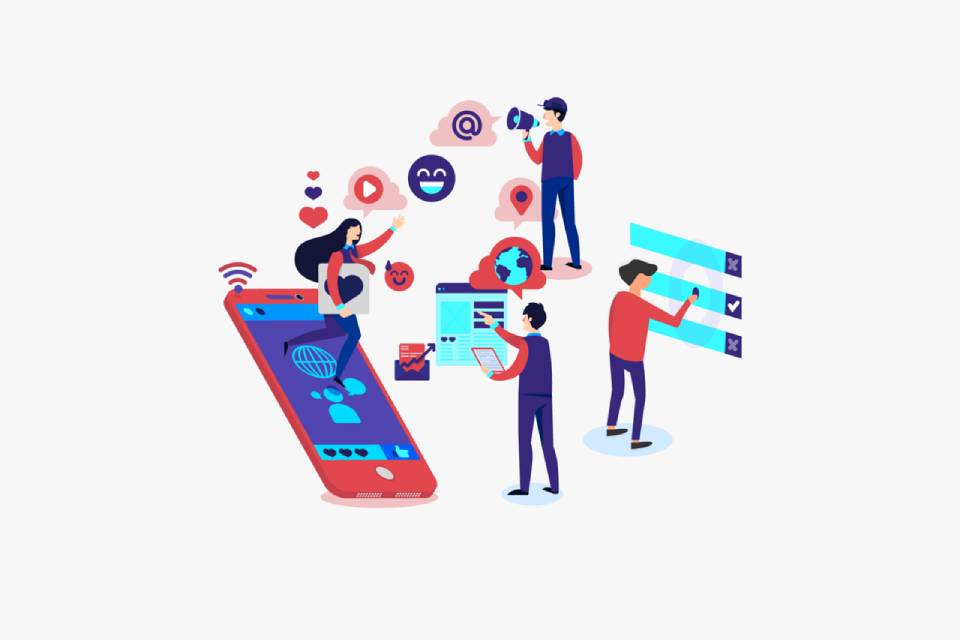The differences between the analogue and digital worlds become blurred and people become wanderers between the worlds. One of the key factors of digitization in particular makes this particularly clear to us: Augmented & Virtual Reality. A study by the Institute of Electronic Business (IEB) identified a total of 32 key factors in digitization from the areas of technology, communication, society and politics , and business and work identified. Today’s key factor Augmented & Virtual Reality comes from the field of technology. The above-mentioned study by the IEB makes it clear: technology forms the basis, and it is through it that digital networking is possible in the first place. What exactly do we mean by Augmented & Virtual Reality and how does it affect our real world?
Augmented & Virtual Reality – An Unequal Pair Of Siblings
The Council of Internet Wise Men, a panel of experts that worked with the IEB to identify the key factors, makes the following statement: “Augmented reality adds a layer of digital information to the real world: text, image or video. Without any additional activity, such information becomes constantly available. Virtual reality enables access to alternative, digital environments using largely identical technologies as in augmented reality.”
Virtual Reality(VR) is an artificial reality created by special hardware and software that can be experienced with the help of VR glasses. The glasses are designed in such a way that when the head moves to the left, for example, the virtual field of view also shifts to the left. The strong illusion arises for the user that they are quite concretely in this actually computer-generated virtual world. Augmented Reality (AR) is the even more future-oriented technology, it connects the real world with the virtual world. Google is planning AR navigation, for example, in which the user, looking for their destination, points the smartphone camera at the place where they are at the moment – for example an intersection.
Possible Areas Of Application For These New Technologies
In the insurance industry For example, the entire processing could be optimized through the use of AR. Documents would no longer be called up on the screen, but via the AR glasses and thrown onto a kind of virtual whiteboard, which makes editing much more convenient. Home office would also be possible in this way. In the event of a car accident, a special app on the smartphone uses the camera to generate images and data from the accident damage based on them.
The images and data are then sent directly to the insurance company together with a report on the course of the accident. In the furniture industry, it is possible to experience facilities interactively in a virtual reality showroom. In the medical field, virtual training courses on surgical techniques can be carried out, and complicated repairs can be simulated in the maintenance field. The gaming sector is also a huge market. The game Incidentally, Pokémon Go was the first AR-based game to reach an audience of millions.
Audi is currently preparing its employees for dangerous work on the high-voltage batteries of the Audi e-tron electric car with the help of virtual training. virtual reality applications will overtake the TV market, with VR headsets replacing TVs and game consoles. Whether virtual inspections of furnishing situations, in the games and erotica industry or in flight training for pilots: the area of application for the new technologies is huge.
Also Read: Metaverse – An Environmental Nightmare?
Legal Aspects
The use of augmented reality glasses provides an almost seamless picture of the person using this technology. This is partly due to the fact that the technology is based on camera and video functions and the data recorded in this way provides information about the user’s location. Where does the person go, what does he shop for, what are his preferences, how does he behave at work, how does he do his job, etc.? Real abysses open up here in terms of data protection. Who can use which information and how? All of this has to be regulated and here the legislator is more than required.
Outlook
Brave new world and if only seen through virtual glasses. Augmented & Virtual Reality are the technologies of the future, nobody can avoid them. What will be possible with it can only be guessed at today. As always, when using these technologies, positive and negative aspects are closely related. People could lose themselves in the endless expanses of the virtual (game) world. What is real and what is virtual becomes blurred and some may confuse one with the other.
The data collected about each individual is becoming more and more precise. A movement profile is created in real time, so to speak, and privacy is dwindling more and more. On the other hand, the new technologies can be ideally used for training purposes of all kinds, they enable digital trying on when buying clothes online, create “virtual” jobs of the future and much more.
Because of its data-driven nature, it is imperative that privacy policies respect the rights and protect user privacy. The key factor Augmented & Virtual Reality makes it clear: These technologies originally come from the field of technology, but where these technologies are used, they change, even revolutionize our lives and significantly influence our working world , our society and our politics.
Opportunities and challenges of the key factor Augmented & Virtual Reality at a glance:
Opportunities: The digital and analogue worlds are merging almost seamlessly. This minimizes the “media discontinuity” between real and digital.
Challenges: People run the risk of “diving” into parallel worlds and losing touch with reality if they no longer share the same environment with their fellow human beings. Digital distractions can increase the risk of accidents.





